An ancient legend of the Valtiberina tells that in the Middle Ages a knight, Manfredi di Montedoglio, lived in these parts and was in love with a young country noblewoman, Rosalia, daughter of the squire of Colcellalto. Because of the difference in class, however, the love between the two was hindered by their families: the two young people, in order not to be conspicuous, met in Badia Tedalda, not far from Colcellalto. During a night of a full moon, Rosalia, looking at the mountains dividing Badia Tedalda from Sansepolcro, told Manfredi that when the moon seemed to lean against the alpe, if one could touch it, every wish would be granted. And furthermore, it seemed that there were incredible treasures hidden in the alpe, which, however, no one had ever been able to find: for the alpe belongs to the moon, and anyone who dares even think of climbing it in search of its treasures would suffer the mountain’s vengeance. Manfred, heedless of the fact that none of those who had tried to touch the moon and recover the treasures had ever returned, decided to attempt the feat, and his Rosalie followed him. They set out, but never returned: so the story goes that when one is on theAlpe della Luna on full moon nights, it is possible to meet the two young people, riding their horses, who still roam these mountains trying to reach out and touch the moon.
These are the ancient suggestions that fascinate those who still walk the paths of the Alpe della Luna Nature Reserve, the park, established in 1998, to protect this unspoiled area of the Apennine ridge, the mountains that, as anticipated, divide Badia Tedalda from Sansepolcro. An area of 1,540 hectares of forests, hills and mountains that reach, at their highest point, the 1,453 meters above sea level of Monte dei Frati, followed by the 1,384 of Monte Maggiore, the two peaks that mark the boundaries to the west and east of this natural area. Located right on the northern slope of Monte dei Frati is the so-called “Ripa della Luna,” an imposing rock face approximately two hundred and fifty meters high, shaped like a sickle, one of the most popular destinations for hiking among the mountains of Alpe della Luna.
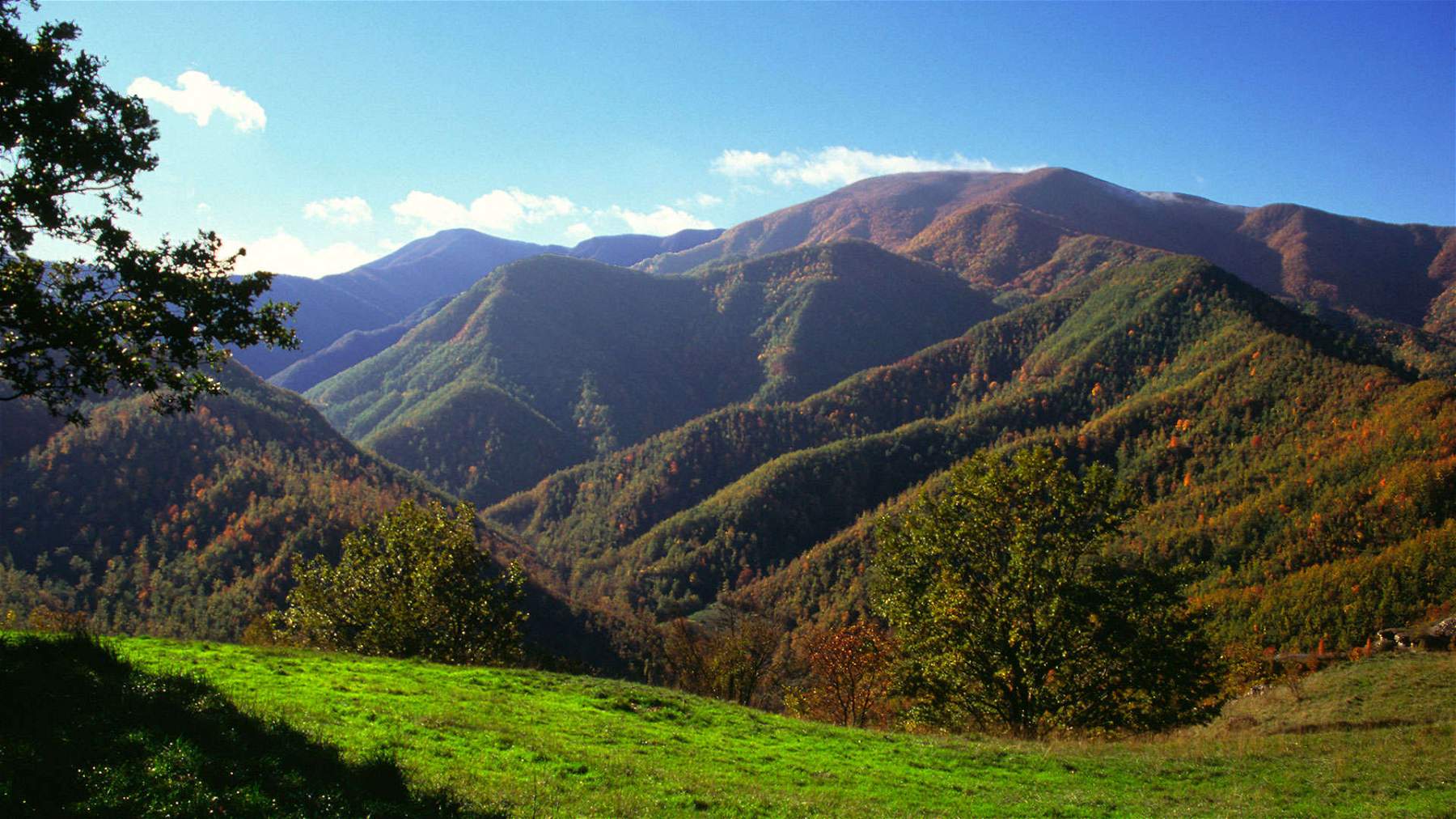
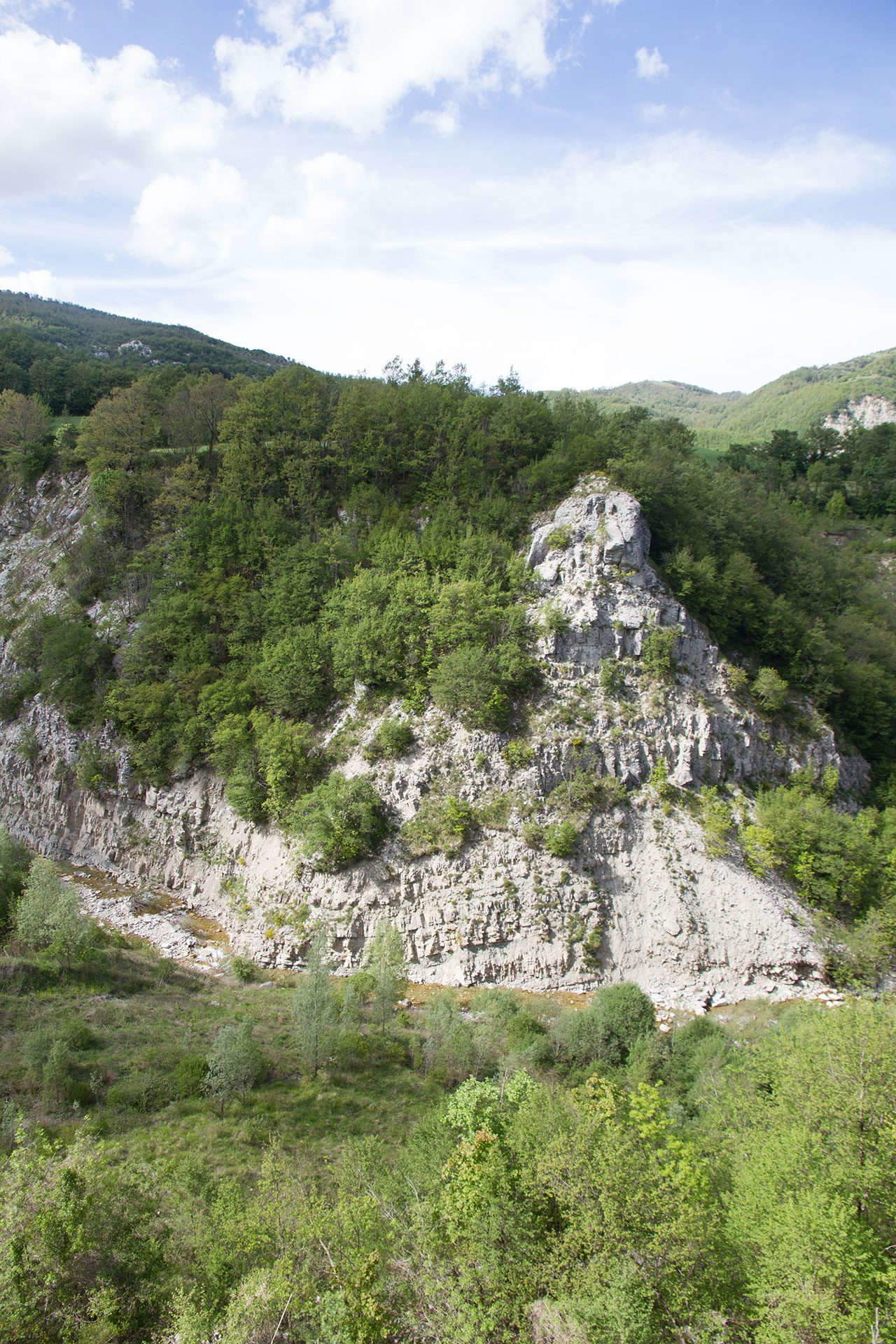



Above all, however, it is the dense forests, especially the large beech forests, that characterize the landscape of this area of the Valtiberina. Beech is therefore the typical tree, although there is no shortage of turkey oaks, linden trees, ash trees, yews, and even some rare plants, especially in the Tuscan landscape, such as the sycamore maple, curly maple, and mountain elm. Primroses and wild orchids, on the other hand, are the flowers that can be encountered especially along waterways. These intricate forests are the perfect refuge for numerous animal species, starting with birds: the golden eagle, sparrowhawk, goshawk, honey buzzard, great spotted woodpecker, lesser spotted woodpecker, and shrike. Among mammals, the presence of wolves, fallow deer, roe deer, foxes, wild boars, hares, squirrels and skunks is reported, and there is also no shortage of distinctive amphibians such as the alpine newt and the italic geotriton. The main gateway to learn about the environment of the Alpe della Luna are the Badia Tedalda Visitor Center, which not only organizes hikes through the reserve’s woods and a variety of educational activities, but also houses a “Memory Room” that tells the history and traditions of the people of theAlta Valmarecchia, and the Germagnano Visitor Center, near Sansepolcro, recently opened (in fact, it was inaugurated in the summer of 2020), which acts as a place to welcome as well as promote events related to the knowledge of the Alpe della Luna territory and knowledge, with reproductions of some animal species that live in these parts and sound effects recreated with multimedia apparatus.
In addition to the forests, it iswater that is the preponderant element of the Alpe della Luna: the territory is furrowed by numerous streams and rivulets that also form spectacular waterfalls, such as the small but marvelous Presalino waterfall, which originates from the stream of the same name, and which can be seen along the municipal road of Pian di Botta, an amazing waterfall that descends from a rock wall forming a scenic natural amphitheater. In addition, several important rivers such as the Metauro, Marecchia or Foglia, which all flow into the Adriatic Sea, originate in the territory of the Alpe della Luna: the sources of the three rivers can be reached through special hiking trails for which information can be obtained from the Badia Tedalda Visitor Center.
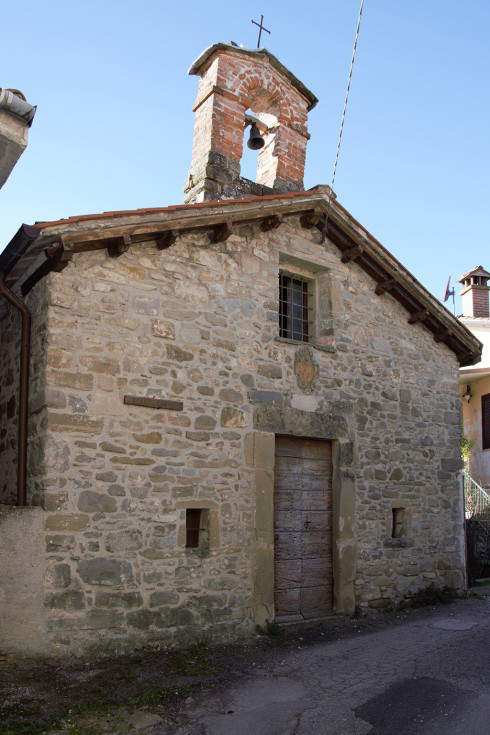

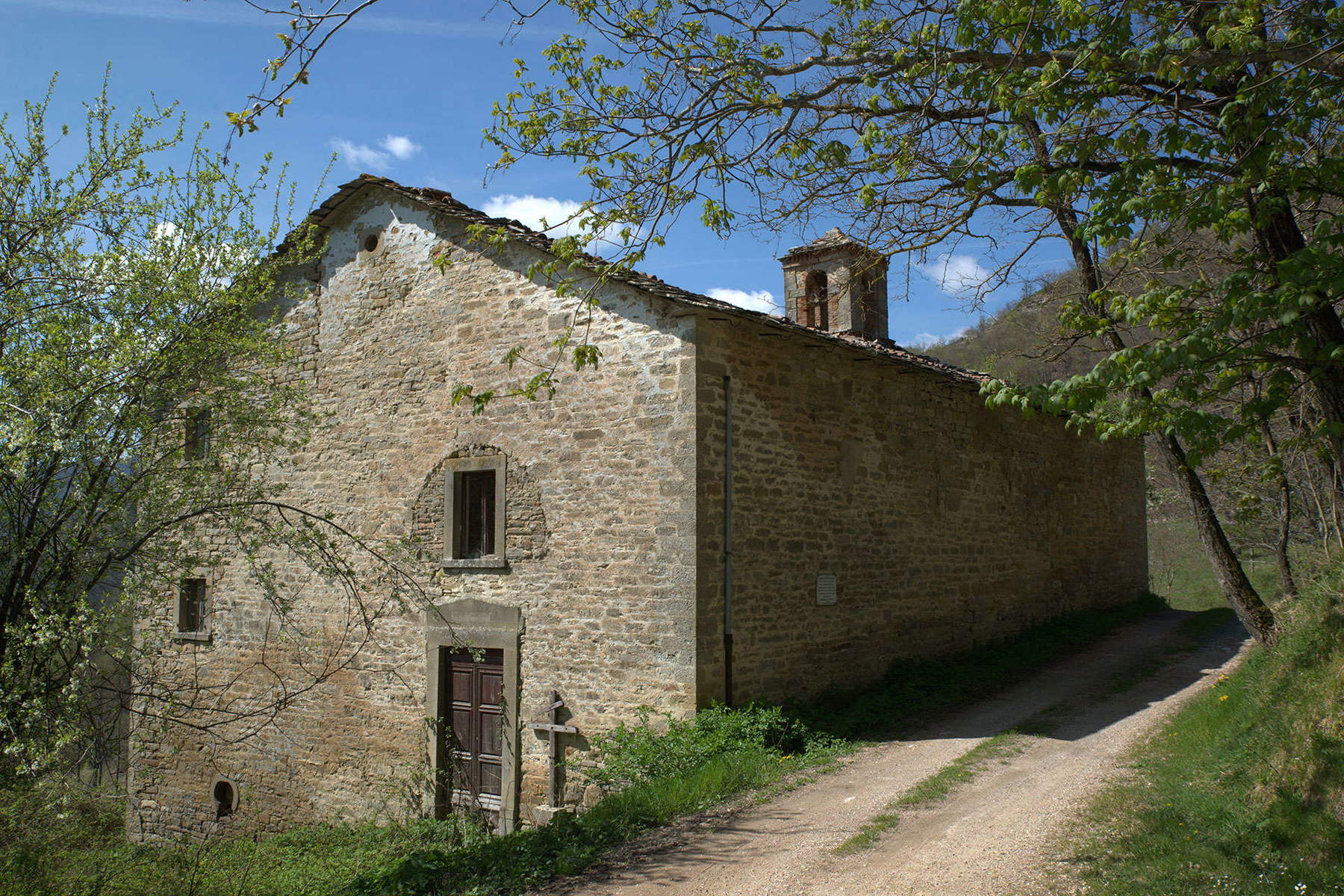
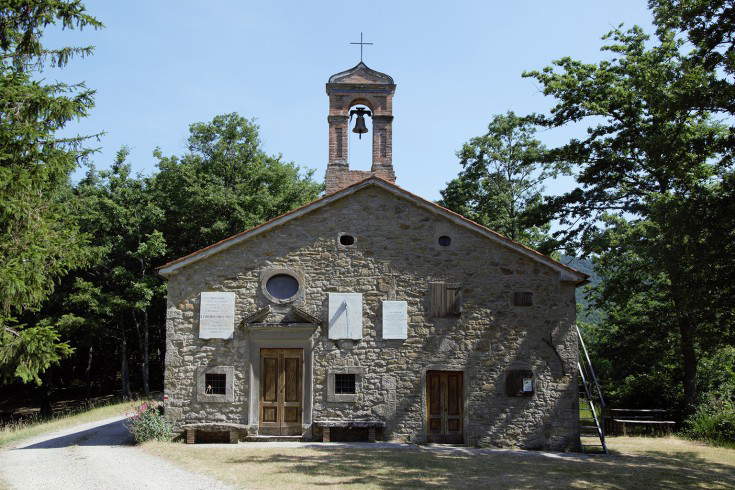
The Alpe della Luna is then, needless to say, a place rich in historical suggestions, traces of which we can try to unearth in the ancient buildings that rise in the villages in the middle of the forests, such as the eighteenth-century chapel of the Beato Ranieri in Prato, a hamlet of Sansepolcro, or that of San Michele in the nearby Villa, or even the church in the depopulated village of Montelabreve, or the sanctuary of the Madonna dell’Aiola, built in 1835 at the behest of the religious Baldassarre Audiberti in order to preserve a sacred image of the Virgin. From here we can imagine passing St. Francis, who in 1213 received from the bishop of Città di Castello theHermitage of Montecasale, a religious complex founded in the late 12th century and located just outside Sansepolcro (tradition has it that the saint from Assisi often went from the Hermitage to the nearby Sasso Spicco waterfall). Or we can imagine Piero della Francesca passing through these places when he had to leave his native Sansepolcro for his many travels, and perhaps he drew inspiration from the landscapes of the Alpe della Luna. This land then had an unhappy past during World War II: in fact, the Gothic Line passed through here, and the Alpe della Luna was also the scene of clashes.
Today, the Alpe della Luna is a lush, unspoiled park, perfect for those who love hiking in the hills or mountains, as numerous paths cross the reserve offering opportunities to explore its nature and enjoy its views, immersed in the silence that is the true ruler of this land, while in the distance, in the thick of the forests, it seems to hear the footsteps of Manfredi and Rosalia still trying to touch the moon.
 |
| Amidst ancient legends and medieval vestiges, a tour on the Alpe della Luna |
Warning: the translation into English of the original Italian article was created using automatic tools. We undertake to review all articles, but we do not guarantee the total absence of inaccuracies in the translation due to the program. You can find the original by clicking on the ITA button. If you find any mistake,please contact us.